Ducks are a common sight on our lakes and rivers, making them easy to spot and identify. They are gregarious, too, often turning up in huge numbers.
From the monochrome markings of the smew, to the incredible greens of teal, wigeon and mallard and the delicate speckling on a gadwall, ducks are stunningly beautiful. Even the shimmering browns, blues and oranges of escapees from private collections such as mandarins, or occasional visitors such as harlequins, seem to have been applied from the perfect palette.
Find our more about this beautiful bird family – including where they live, the best time to see them, which species live in Britain, the best places to see them and how to identify them – with our guide to ducks in the UK.
Spotted a water bird you're not sure of? Check out our Guide to wading birds: how to identify and where to see and our guide to Britain's geese species: how to identify and where to see.
ID guide to the UK's ducks
Everyone knows the mallard and its cheerful quacking call. But Britain has a colourful array of other ducks to discover, which look their best in winter, having moulted into fresh finery. Here are nine handsome wildfowl to look for. The males tend to have brighter plumage than their mates but share the same overall shape.
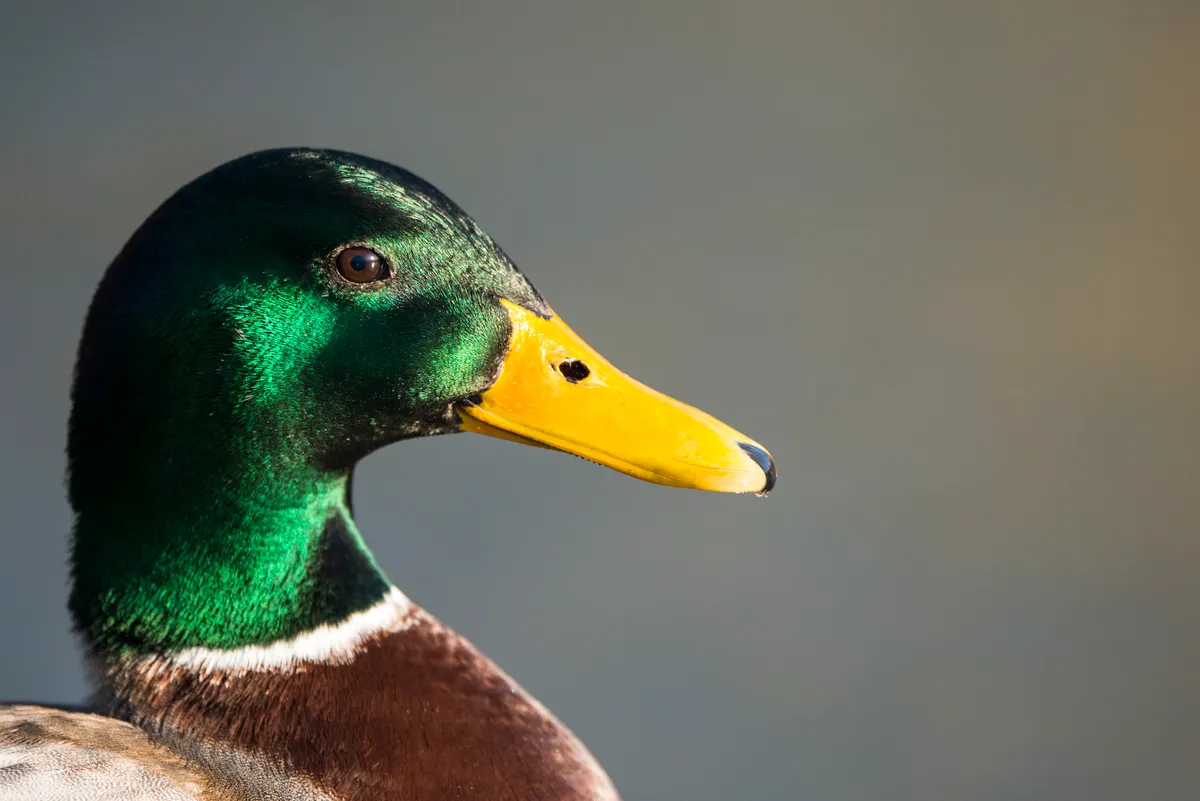
Teal
Britain’s smallest duck. Both sexes have a bright green wing-flash, although the female is dull brown overall. Teal take off almost vertically, like Harrier Jump Jets – a neat predator-avoidance strategy.
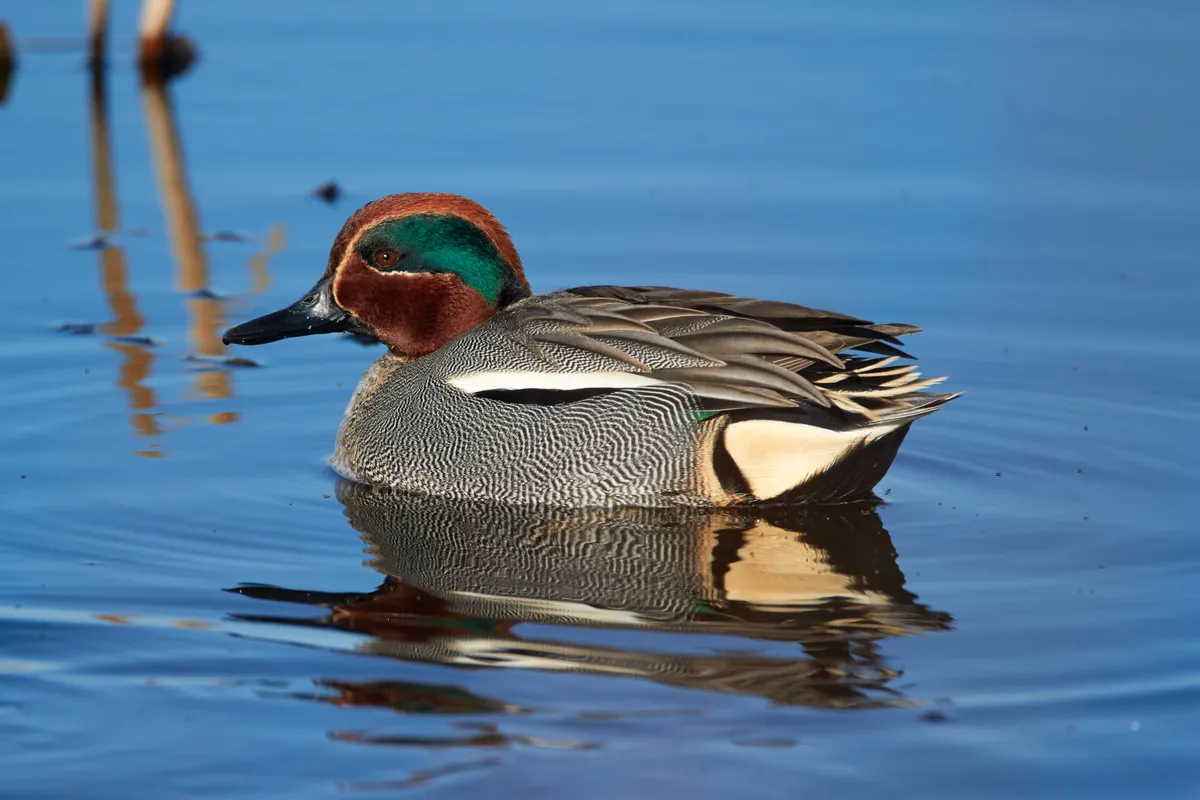
Tufted duck
Our most common diving duck. Repeatedly vanishes beneath the surface in search of small fish and water snails. Drakes are piebald; females greyish-brown.
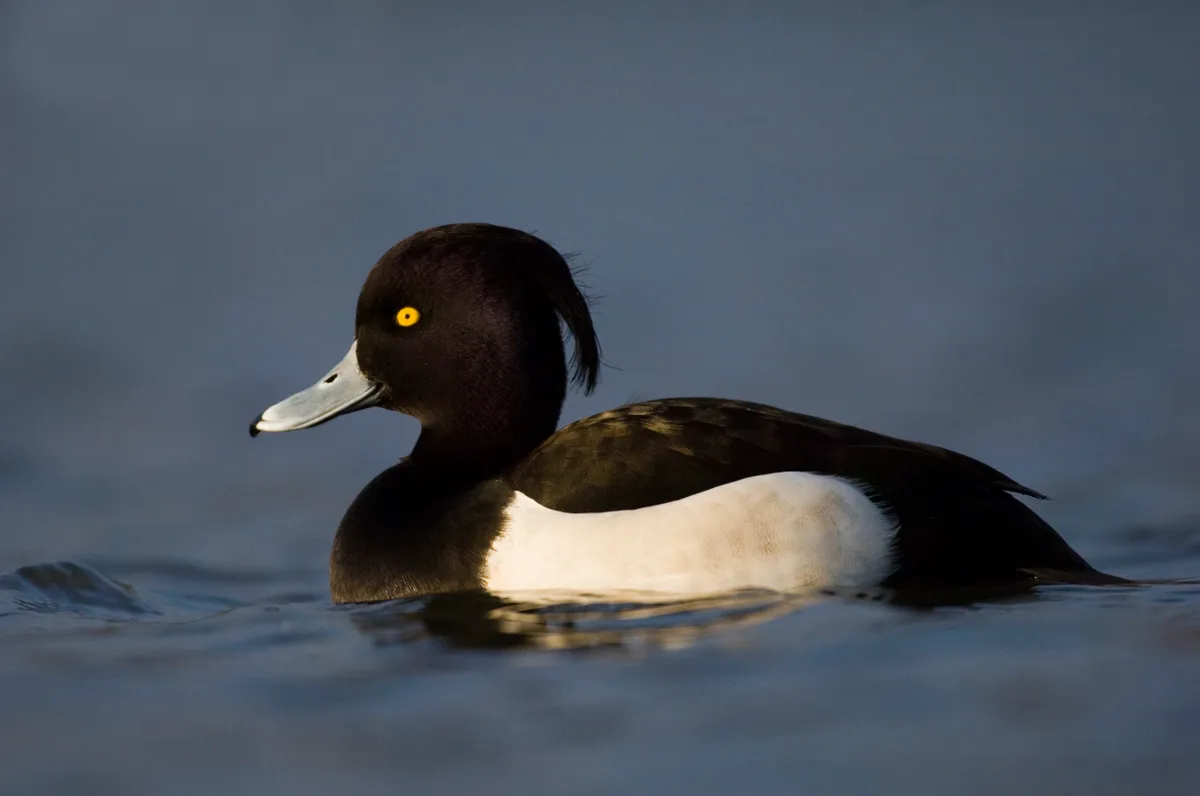
Goosander
The goosander’s narrow, elongated bill has saw-toothed edges for catching fish. A colourful addition to lakes and reservoirs in winter. Females have shaggy, reddish-brown heads.

Wigeon
With its buttery-yellow forehead stripe, chestnut head and pink breast, the drake wigeon is among our smartest wildfowl; the female is mainly rufous. Its call is a far-carrying wolf-whistle.
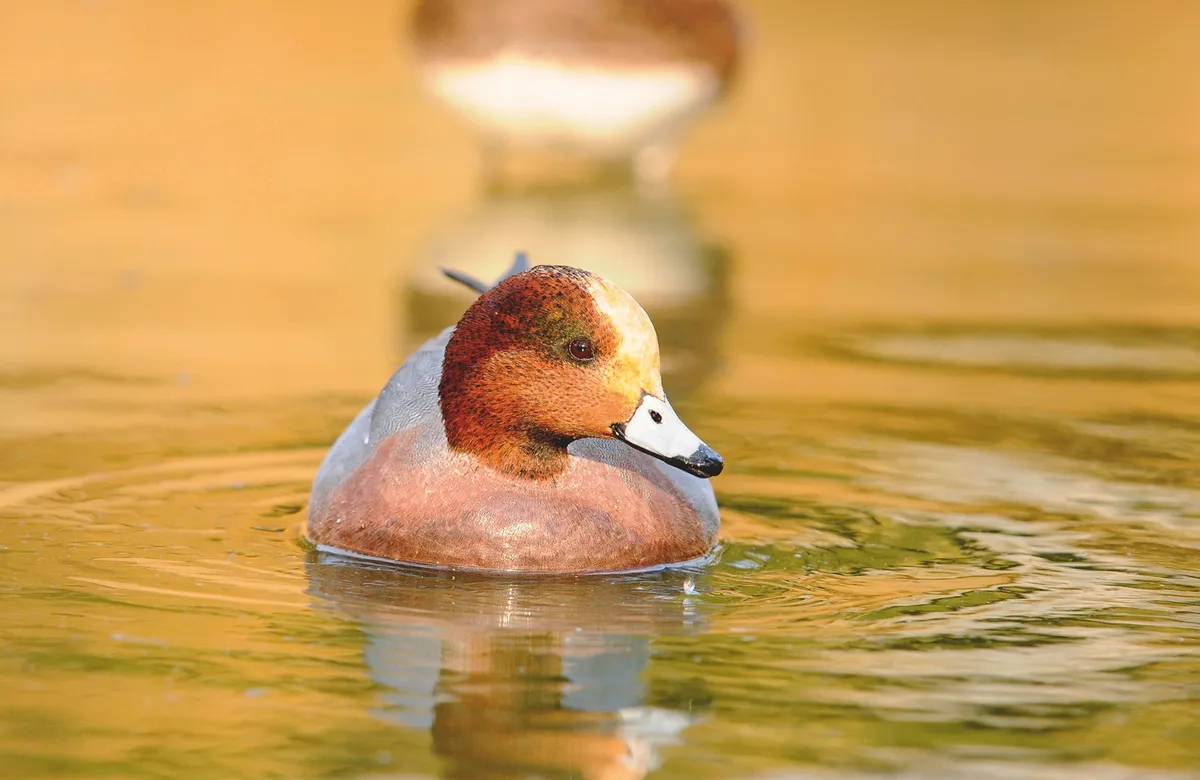
Pochard
Frequently gathering in flocks with tufted ducks, this plump species is a winter visitor from eastern Europe. It dives for food, surfacing like a buoyant cork. Females are plainer versions of the males.
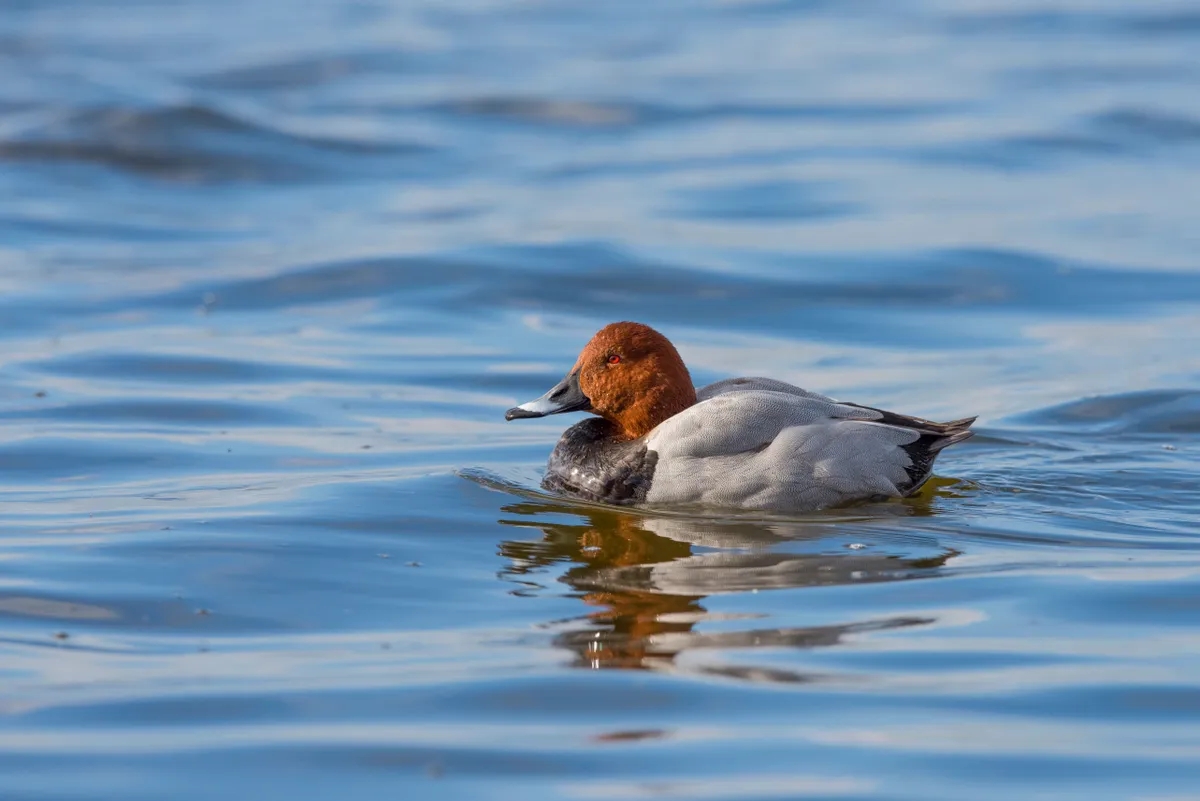
Mandarin
Native to China, this exotic species is now more numerous in Europe, where it escaped from wildfowl collections. The male has amazing orange ‘sails’ – actually modified wing feathers.
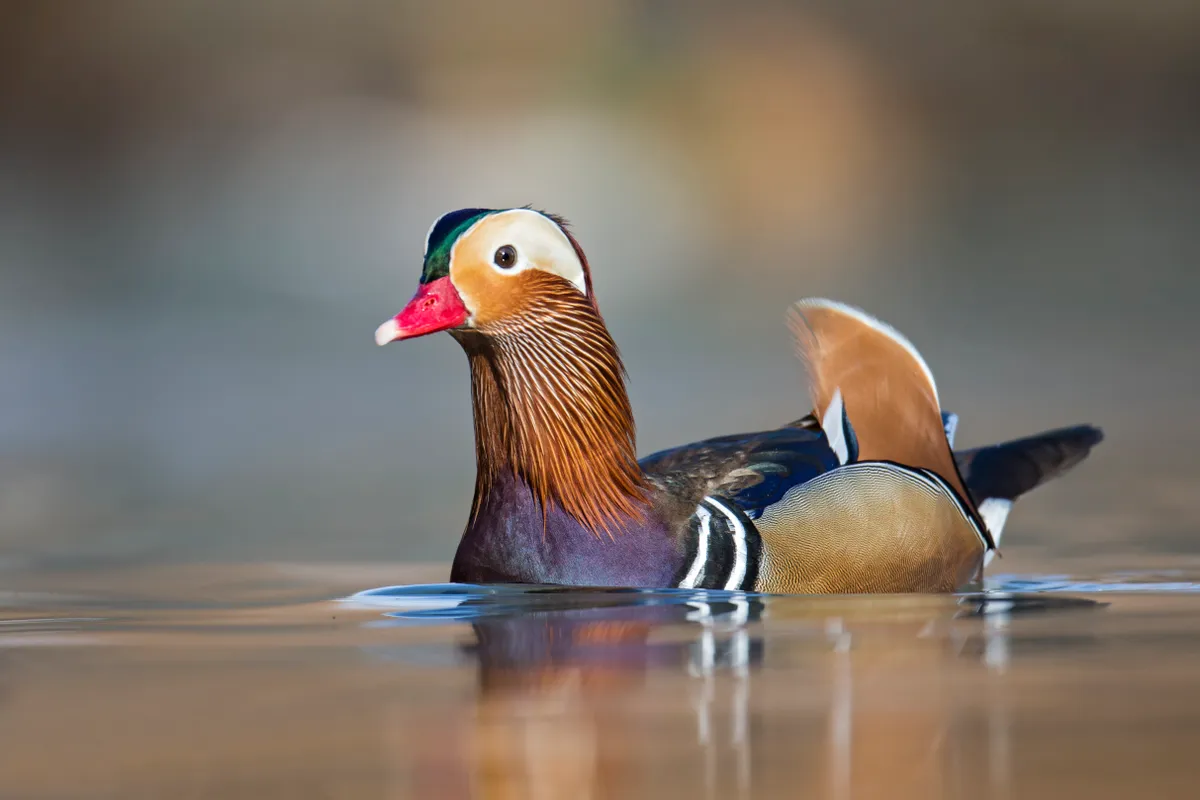
Shoveler
Named for its enormous, spatulate beak, the shoveler sweeps this extraordinary appendage from side to side through the water to filter out tiny organisms as food. The brown female is pretty nondescript.
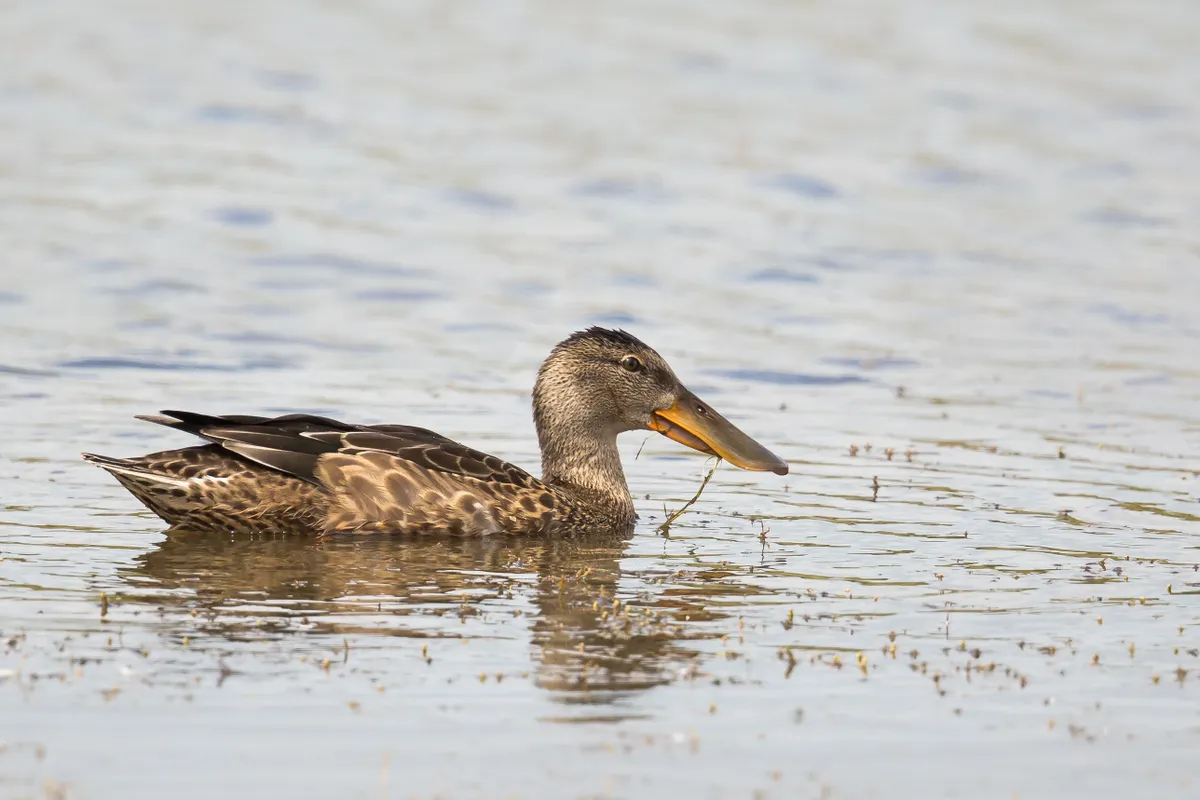
Goldeneye
Scarcer than the other diving ducks, so a real treat on a winter lake or reservoir. Females are muted brown and grey, but both sexes have distinctive pale yellow eyes, visible at surprisingly long range.

Muscovy
Large and chunky, like a small goose, the muscovy duck is native to Mexico and Central America but was introduced here for food. Both sexes have patches of bare red facial skin and variable plumage.
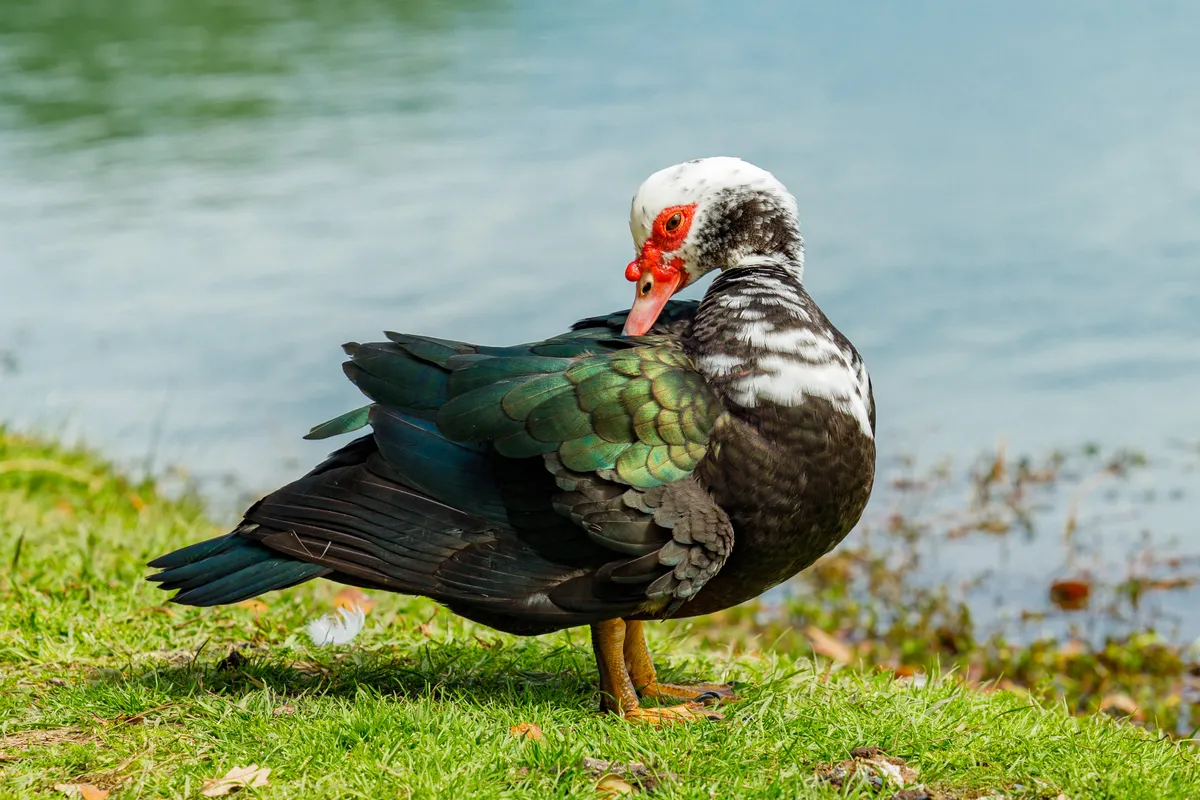
When is the best time of year to see ducks?
You can see some species of duck all year round in the UK. But it is in the winter months, when the resistant species are joined by winter visitors, that you stand the best chances of seeing the most species. The chances are that where there’s water, there are ducks – just waiting to inspire the next generation of budding naturalists.
What is the difference between a duck and goose?
The best way to tell them apart is size. Geese, with their more elongated necks, tend to be much bigger than ducks, although the shelduck comes close to bridging the gap. Ducks also feed on water, with the exception of wigeon, which prefer to join the geese grazing in fields.
Do ducks nest in trees?
Several species, including goldeneye and goosander, prefer to nest in tree holes. But ducks are one of the few birds that don’t feed their young, so as soon as the ducklings have hatched, they need to flop out of their hole and go in search of food.

Do ducks migrate?
Some ducks reside here all year, such as the mallard, teal and tufted duck, their numbers swollen by over-wintering visitors that sweep across from the Arctic, eastern Europe and Russia to take advantage of our relatively mild winter conditions.
They’re joined by a clutch of ducks that migrate to the UK annually to take advantage of these warmer conditions, using us as a service station where they can feed up before flying back to their summer breeding grounds. These include many of our sea ducks, such as smew and scaup, as well as goosanders and pintails.
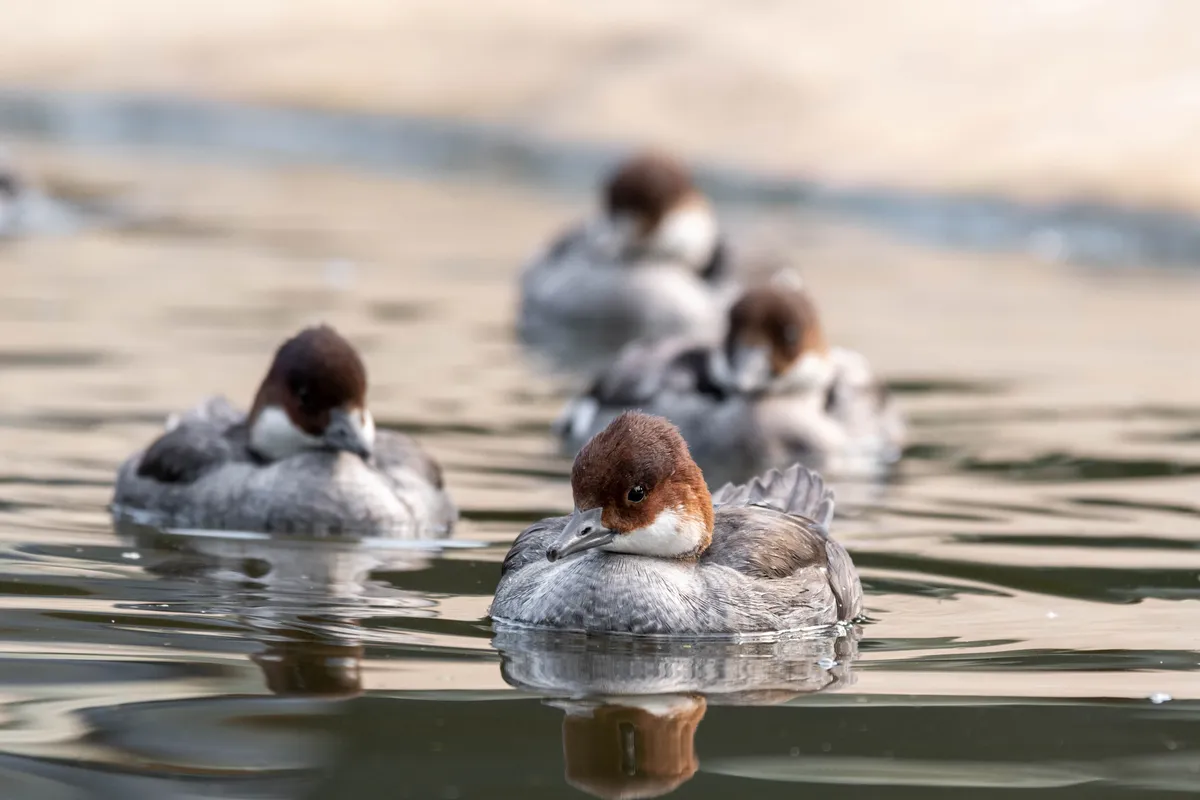
What do ducks eat?
Dabbling ducks – such as mallards, shovelers and pintails – filter algae and weed on the surface of the water, occasionally up-ending themselves to nibble aquatic plants.
Diving ducks, which include all those living at sea, prefer molluscs and fish – long-tailed ducks have been known to dive to a depth of 70m in search of shellfish. Some freshwater ducks , such as pochards, dive, too, rummaging around in the mud or, in the case of the tufted duck, hunting out zebra mussels. Sawbills are divers, as well. Goosanders choose our inland waterways, while smew and red-breasted mergansers live off the coast. They use their serrated beaks to catch fish under water.
What species of duck is the most colourful?
It’s hard to beat the teal, with its chestnut head and iridescent dark green patch around its eye. Honorary mentions also go to the aloof looking red-breasted merganser and the humble mallard drake, with its glossy, bottle-green head.

What is the fastest species of duck?
Reaching speeds of 60mph (97kmph), the eider is one of the world’s fastest birds in level flight.
What is the commonest duck species in the UK?
The mallard is our commonest duck, with as many as 100,000 breeding in the UK, and over 650,000 spending the winter here.
What is the rarest duck species in the UK?
In contrast, fewer than 50 pairs of common scoter breed in the UK, although their ranks can be swelled by up to 100,000 in winter, when they float in huge rafts out at sea.
You may also like:
What is the smallest duck species in the UK?
The diminutive teal, which weighs just 330g, is the UK's smallest duck.
What is the largest duck species in the UK?
Weighing in at over 2kg, and with a wingspan of 94cm, the eider takes the plaudits as our biggest duck.
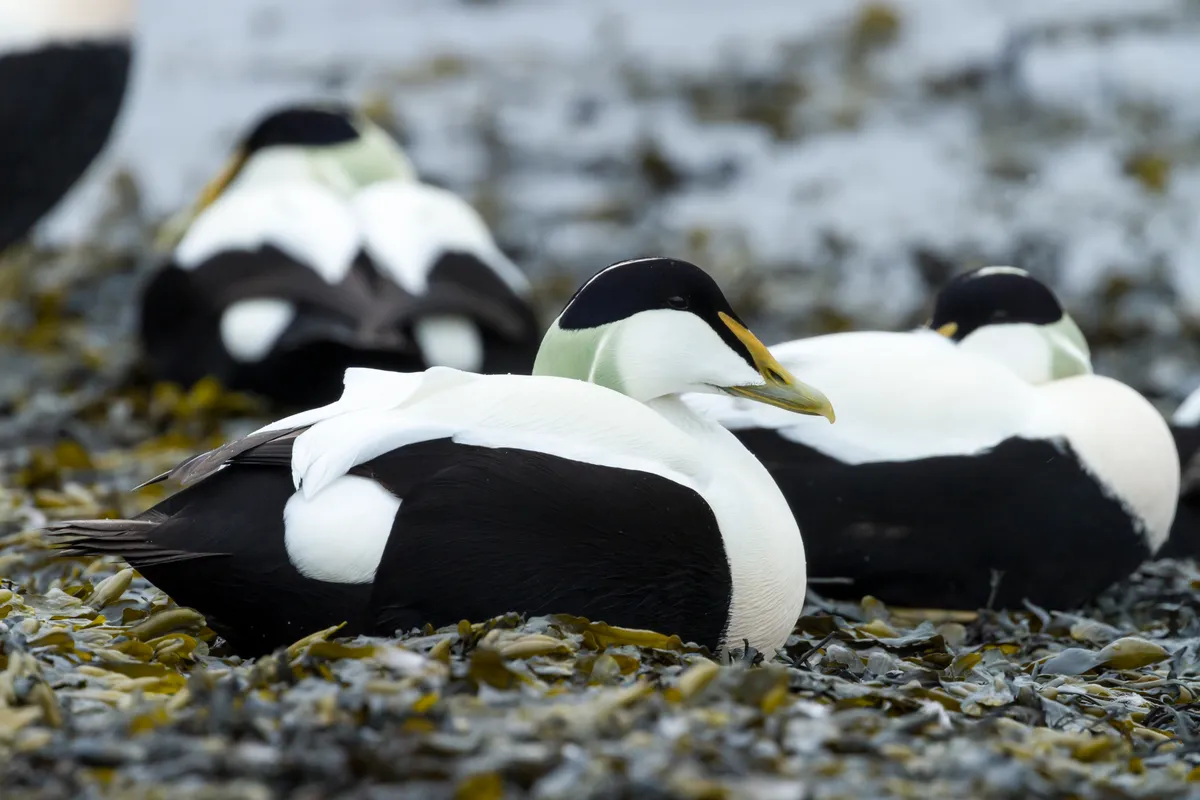
Do all ducks quack?
Non-native ducks in the UK
Alongside our native ducks, there are interlopers. These include the mandarin from Asia. However, you’ve less chance of spotting the North American ruddy duck, which has been virtually eradicated in Britain for fear that it would interbreed with its close relative, the rare white-headed duck in Spain.
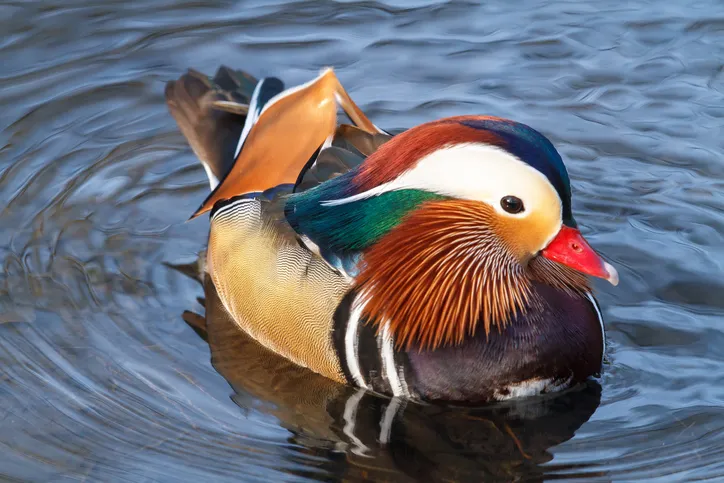
What is a gizzard?
A gizzard, or ‘muscular stomach’, is common to all birds. For ducks, it’s where they grind up food such as grains or shellfish, with the nutrients passing into the true stomach, and the crushed shells or husks either passed out as a pellet or in droppings.
Should you feed bread to ducks?
While a bit of bread isn’t a problem, too much can be harmful. It has little nutritional value and any uneaten bread quickly pollutes duck ponds. Better to feed them with grain or special duck food, which is available online or from garden centres.
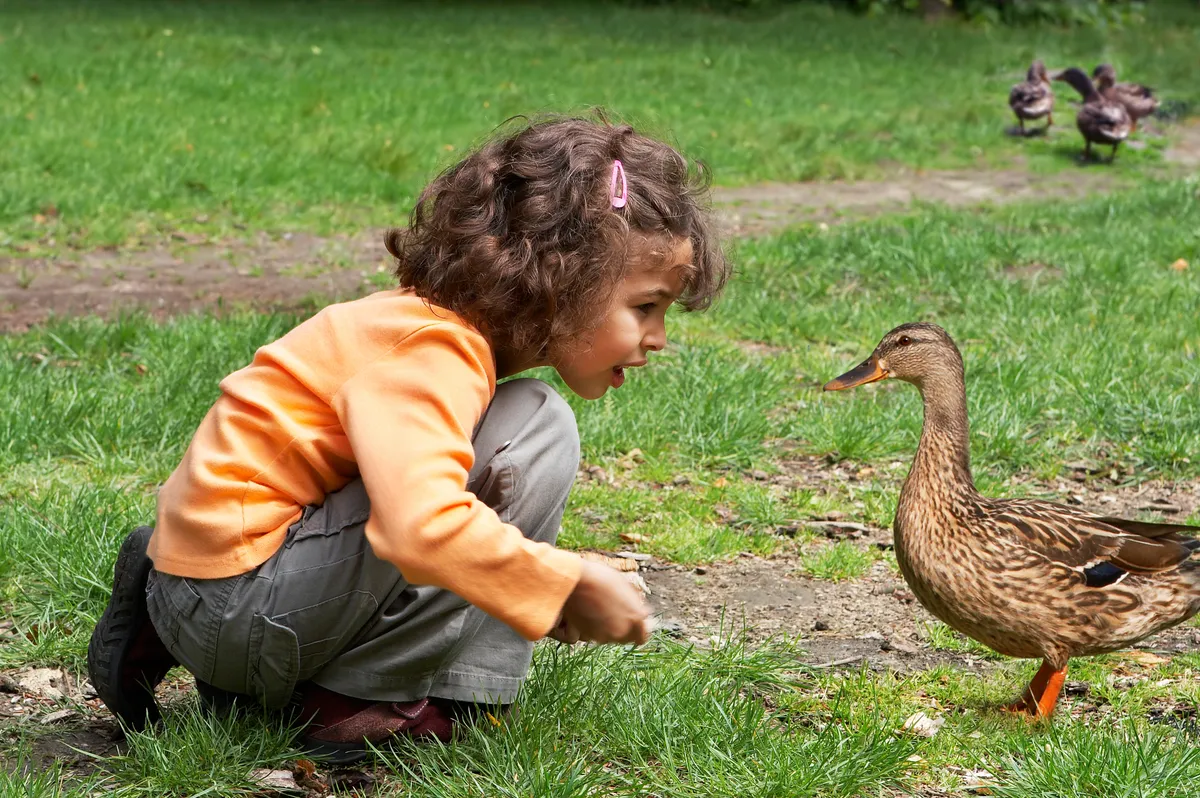
Ducks throughout history
Ducks have played a huge part in our lives. For centuries, the down from eider nests has been collected and used to stuff pillows and eiderdowns, while other species have been domesticated or hunted for the plate.

Where are the best places in the UK to see ducks?
With innumerable lakes and meres, estuaries and rivers, Britain is ideal duck habitat. Mallard, teal and tufted duck turn up pretty much anywhere there’s water, from town parks to gravel pits, while rarer species may be spotted in reservoirs close to cities. Goosanders are at home on our fast-flowing rivers,
while the secretive garganey heads for reedy pools in open grassland. Our coastal waters attract marine specialists such as eiders. They’re often joined by other sea ducks such as scaup and pintails, as well as the red-breasted merganser. Here are a few great locations for a bit of duck watching:
Montrose Basin, Scotland
Mudflats, saltmarsh and reed beds draw eider and wigeon, as well as vast flocks of pink-footed geese.
Portmore Lough, Northern Ireland
A stronghold for huge numbers of pochards and tufted ducks, with whooper swans offering a noisy spectacle at dusk as they fly in to roost.
Ynys-hir RSBB Reserve, Mid Wales
Wigeon, teal and shovelers love the estuary saltmarshes, although the star species are white-fronted geese from Greenland.
Llanbwchllyn, Radnorshire
As well as large numbers of tufted ducks and goosanders, bitterns and great northern divers are also occasional visitors.
Loch of Strathbeg, Aberdeenshire
Coastal reserve where, in a really cold snap, there’s the chance to see smew, long-tailed duck and scaup.
Wheldrake Ings, Yorkshire
Winter floods attract tens of thousands of wigeon, teal, pintails and mallards, plus Icelandic whooper swans.
The Ouse Washes, The Fens
The largest area of washland – grazing pasture that floods in the winter – in the UK is home to as many as 100,000 wildfowl and waders, including large flocks of wigeon and shovelers.
London Wetland Centre, Barnes
A winter resting ground for many different species of ducks, as well as the rare water rail.
Slimbridge, Gloucestershire
A true wildfowl hot spot, with most of our inland ducks jostling for attention, including pochards and pintails.
Catcott Complex, Somerset
Flooded fields attract wigeon, pintails, shovelers and teal, as well as Bewick’s swans, the smallest swans to visit the UK.

